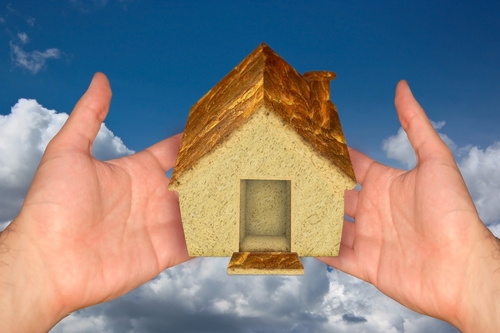
Auckland's biggest real estate firm Barfoot & Thompson has been crunching the numbers and come up with the fact that some of the household dietary staples have proportionately risen more in price since 2008 than the average Auckland house.
It will or won't come as comfort to Aucklanders to discover, for example, that the cost of the loaf of bread they bought today has risen more in percentage terms in that time than the cost of the house they are living in.
In a 'market report' on its website, B&T has examined data recently released by Statistics New Zealand in its New Zealand in Profile 2014 report, in particular the prices featured in that report, comparing what some commonly purchased essentials would have cost in 2008 and what they cost in 2013..
Against this, B&T has run its own Auckland house price data, coupled with Department of Building and Housing data, comparing what houses and rents in Auckland cost in 2008 and 2013.
The Stats NZ research shows that the humble white, sliced, loaf of bread as of the end of last year cost $1.94 - up a whole 40.6% on the $1.38 it cost in 2008. And for anybody fancying washing down that delicious white bread sandwich with a deeply reviving ale, well a 400 ml glass of beer's risen by 29.3% to $5.78.
This contrasts with a mere 26% rise in the average Auckland house price (to $650,405), a 15% rise in Auckland rent (to $443.51) and a 12% rise in rent nationally to $351.48.
Other commonly purchased items have fared somewhat better in comparison with houses though. According to Stats NZ a standard two litres of milk actually dropped by 1.2% to $3.19, petrol increased from $1.94 a litre to $2.05 (+5.6%), apples increased from $2.11 to $2.32 a kg (+10%), a kilogram of lamb chops rose 14.5% to $12.29, a visit to the doctor rose by nearly 24% to $36.28 and a helping of good old fish and chips rose by 17% to $5.77.
What all these comparisons actually mean is perhaps a moot point, though it does show that in percentage terms perhaps the Auckland house price rises - often hyped up as over-blown and excessive - are not so excessive when put up against the increasing cost of some household essentials.
And if anybody's finding the cost of bread a bit heavy, remember, house prices are going up more slowly. If the bread's getting too rich for your blood, we at interest.co.nz heartily recommend supplementing your diet occasionally with a good healthy chunk of sawn-off, renovated, Herne Bay Villa, drizzled in extra virgin olive oil, quickly seared, and served with a bracing mango coulis.
11 Comments
All means diddly if earnings are not matching the pace, and if the market were restricted to NZ earnings the rise would have been even less and reflected what earnings were doing.
Putting aside the cherry-picked, or should that be wheat picked, basis of comparison, this is one of the reasons that people who only compare rates of change miss the point. For example if you added up all the bread eaten over thirty years, and looked at the increases in costs how does that total amount match the amount houses have gone up by (include the interest payments for the house). Basically, comparison are bogus unless you can justify why you are making the comparison.
"This contrasts with a mere 26% rise in the average Auckland house price"
Lol, at that rate of growth an 'average' $500,000 Auckland home today will cost $2,200,000 to buy in only 30 years time. A $300,000 'cheapy' would be worth $1,370,000. Hmmmm, definitely looks like 'sustainable growth'!
Average household income to meet Hugh's multiples would have to be $450,000 at a minimum. Sounds plausible!
And a loaf of bread in Shanghi is about $2 NZ, not the $197 NZ that the property comparison you gave would indicate. Which is why comparing unrelated products is daft.
With China at 100 - 200% home ownership rate probably not much point in comparing utility value. Greater fool theory maybe relative.
I was trying to say comparing houses to bread as in the Barfoots release is daft (because it gives a ratio 100 times different). I am entirely comfortable comparing houses to houses.
Because empty apartments dont value seaviews
http://www.bloomberg.com/news/2010-08-17/at-least-half-of-apartments-in…
ZZ I don't want to get into a big argument but I doubt your statistics that Houston sprawls 50 times the size of Auckland and Melbourne 20 times. I suspect the definition of the city limit is not the same.
hmm Palmy North bread, much of it is well over $3 - $4.50. Except for ultra budget brands, and loss of quality shows
I buy "better quality" bread, interesting the cost rises on that are quite significant I suspect....ie Ihave not watched it until recently.
regards
It just occurred to me- we can use these "facts" revealed by Barfoots to build houses out of cheaper traditional materials, such as gingerbread.

We welcome your comments below. If you are not already registered, please register to comment.
Remember we welcome robust, respectful and insightful debate. We don't welcome abusive or defamatory comments and will de-register those repeatedly making such comments. Our current comment policy is here.